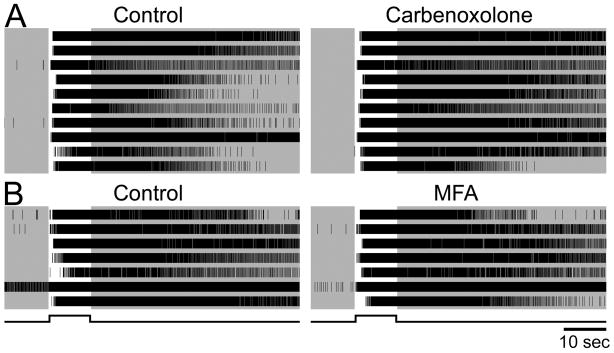Figure 2.
Gap junction blockers do not suppress light-evoked spiking driven by inner-retinal photoreception. The cocktail blocking rod and cone signaling was present in all cases, so all light-evoked spiking was presumably driven by melanopsin-based phototransduction. Single units were identified by offline spike sorting. A: Raster plots of intrinsic light responses in ten single ipRGCs recorded simultaneously on a multielectrode array before (left) and during (right) bath application of carbenoxolone, a gap junction blocker. The lack of effect of carbenoxolone suggests that spiking was driven by phototransduction within each light-responsive cell, and not indirectly through electrical synapses with ipRGCs. B: Same as A except that an alternative gap junction blocker was used (meclofenamic acid, 200 μM). Cell represented by the second trace from the bottom had an unusually high rate of spontaneous spiking in darkness (~10 Hz) but exhibited a robust light response nonetheless (~40 Hz). Data in A and B are from two different retinas. The stimulus was a −2 log I flash.

